Diamond
Diamonds are one of the most precious and valuable gemstones in the world, known for their exceptional hardness, brilliance, and durability. They are formed deep within the earth over millions of years under intense heat and pressure, and are typically found in kimberlite pipes or alluvial deposits.
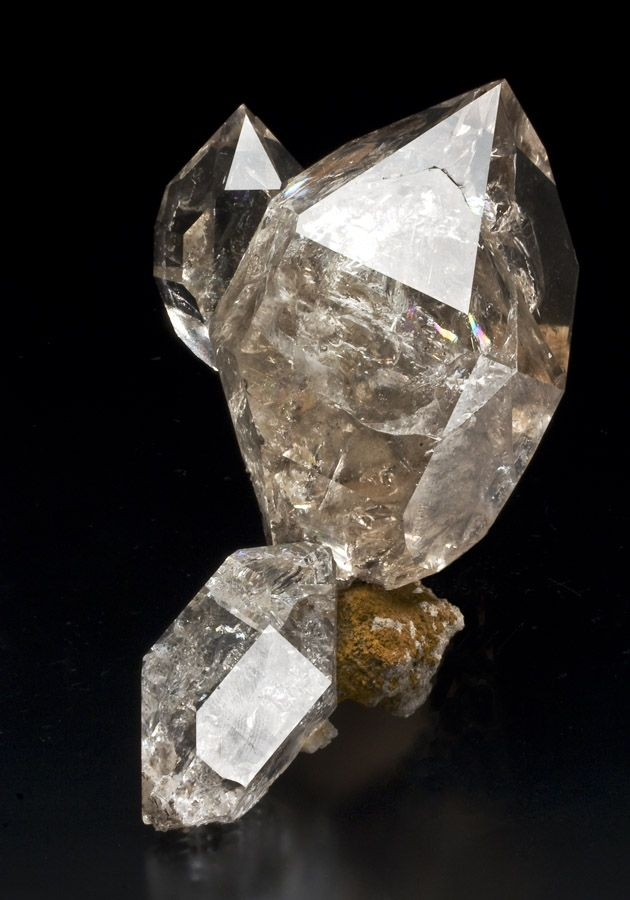
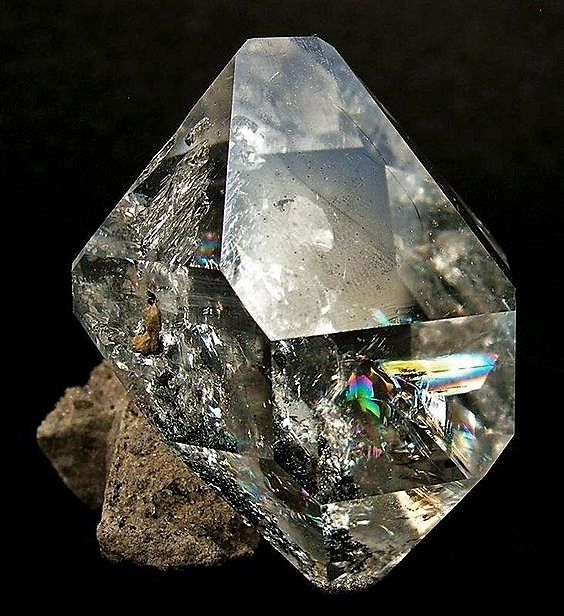
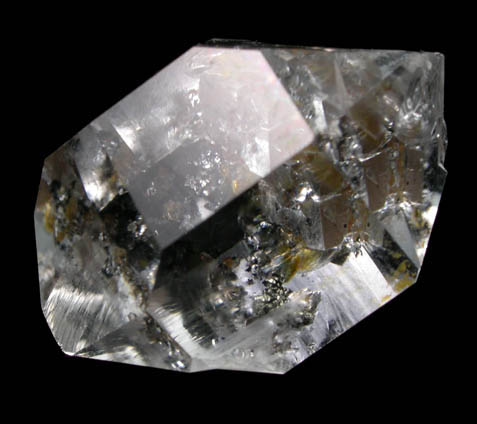
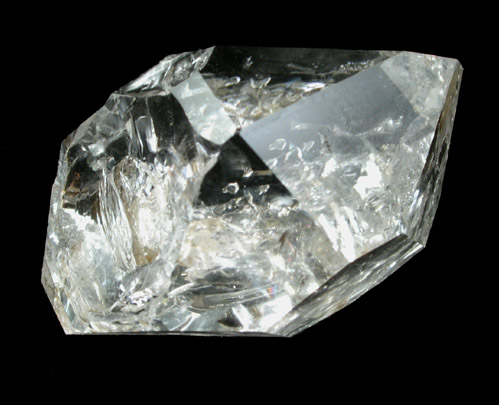
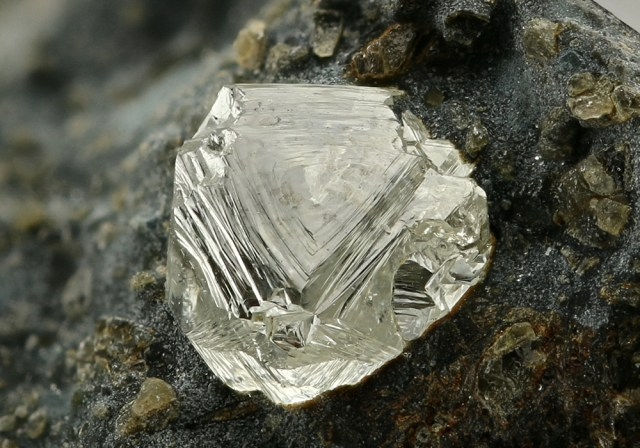
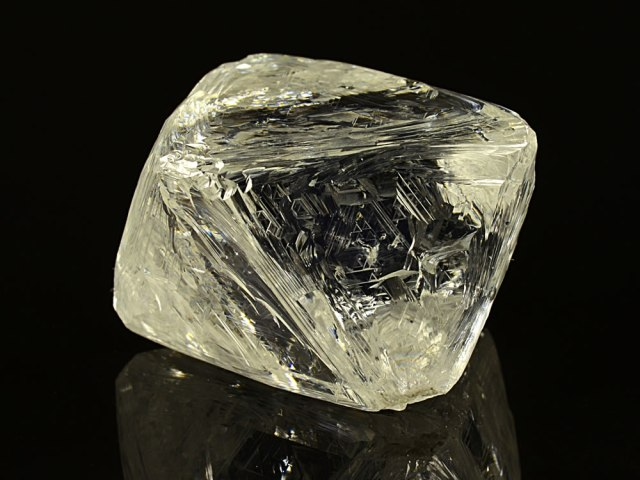
Quartz Herkimer Diamond
Herkimer diamond
Herkimer Diamond with Pyrobitumen inclusions from Middleville, Herkimer County, New York
Herkimer Diamond Mineral
Herkimer Diamond from Hickory Hill Diamond Diggings, Montgomery County, New York
Diamond in Kimberlite
552 Carats Diamond
The importance of diamonds lies in their widespread use across various industries. In the jewelry industry, diamonds are highly valued for their beauty and rarity, and are used to create stunning pieces of high-end jewelry. The value of a diamond is determined by the famous “4 Cs” – carat weight, color, clarity, and cut.
Diamonds are also widely used in the industrial sector for their unique physical properties, such as their extreme hardness and thermal conductivity. They are used in cutting tools, polishing abrasives, and as heat sinks in electronic devices.
In addition to their aesthetic and industrial uses, diamonds have also played a significant role in the financial industry. Diamond trading and investment is a multi-billion dollar industry, with major diamond centers located in cities such as Antwerp, Dubai, and Mumbai.
Overall, diamonds are highly valued and important across multiple industries, making them a crucial part of the global economy.
Association: Forsterite, phlogopite, pyrope, diopside, ilmenite (kimberlite pipes); ilmenite, garnet, rutile, brookite, anatase, hematite, magnetite, tourmaline, gold, zircon, topaz (placers).
Contents
- Explanation of how diamonds are formed
- The geological setting of diamond formation
- The diamond formation process
- The two primary processes by which diamonds are formed
- The role of pressure and temperature in diamond formation
- The process of diamond crystallization and growth
- Chemical Properties of Diamond
- Physical Properties of Diamond
- Optical Properties of Diamond
- Occurrence
- Uses Area
- Industrial diamonds
- Diamond is a Gemstone
- Distribution
- Diamond exploration and mining
- Recap of key points
- Diamonds FAQ
- References
Explanation of how diamonds are formed

Diamonds are formed deep within the Earth’s mantle, approximately 140-190 kilometers below the Earth’s surface. The formation of diamonds is a complex process that requires specific conditions of pressure, temperature, and chemical composition.
Diamonds are formed from carbon atoms that are subjected to intense heat and pressure. The high pressure is typically generated by the weight of the overlying rock and sediment, and the high temperature is caused by the Earth’s internal heat.
The process of diamond formation begins when carbon-rich materials, such as organic matter or carbon dioxide, are subjected to high pressure and temperature. This causes the carbon atoms to bond together in a crystalline structure, forming diamond crystals.
These diamond crystals are then transported to the Earth’s surface through volcanic eruptions. The diamonds are carried in volcanic magma, which cools and solidifies to form igneous rocks. These rocks, called kimberlites or lamproites, contain diamonds in their rough form.
In addition to volcanic eruptions, diamonds can also be brought to the surface through erosion and weathering of existing kimberlite pipes or alluvial deposits. Over time, these processes expose the diamond-bearing rocks and make them accessible for mining.
Overall, the formation of diamonds is a complex process that occurs over millions of years deep within the Earth’s mantle. The resulting diamonds are highly valued for their rarity, beauty, and durability, making them one of the most precious and sought-after gemstones in the world.
The geological setting of diamond formation

Diamonds are formed deep within the Earth’s mantle under specific geological conditions. The geological setting for diamond formation is typically associated with regions of the Earth’s mantle that have undergone high pressure and temperature over long periods of time.
Diamonds are commonly found in two geological settings: kimberlite pipes and alluvial deposits. Kimberlite pipes are vertical cylindrical structures that originate from the Earth’s mantle and extend through the Earth’s crust. These pipes are formed when magma and other material from the mantle rise to the surface through volcanic eruptions. The magma contains diamonds that were formed deep within the Earth’s mantle. Over time, the kimberlite pipes erode and release diamonds, which become available for mining.
Alluvial deposits, on the other hand, are formed from the erosion and weathering of existing kimberlite pipes. Over time, the material from the pipes is transported by water or other natural processes to nearby rivers, streams, or ocean shores. As the material settles, the heavy minerals, including diamonds, become concentrated in alluvial deposits.
The geological conditions required for diamond formation include high pressure, high temperature, and a source of carbon. The high pressure is typically generated by the weight of the overlying rock and sediment, and the high temperature is caused by the Earth’s internal heat. The source of carbon can come from organic matter or carbon dioxide.
Overall, the geological setting for diamond formation is complex and requires specific conditions. The resulting diamonds are highly valued for their rarity and beauty, making them one of the most sought-after gemstones in the world.
The diamond formation process

The process of diamond formation is a complex and lengthy one that takes place deep within the Earth’s mantle. The formation of diamonds requires specific conditions of pressure, temperature, and chemical composition.
The process begins with the presence of carbon-rich materials, such as organic matter or carbon dioxide, that are subjected to high pressure and temperature deep within the Earth’s mantle. The high pressure is typically generated by the weight of the overlying rock and sediment, and the high temperature is caused by the Earth’s internal heat.
Under these extreme conditions, carbon atoms within the materials bond together in a crystalline structure, forming diamond crystals. These crystals can take millions or even billions of years to form.
Once the diamonds have formed, they may be transported to the Earth’s surface through volcanic eruptions. The diamonds are carried in volcanic magma, which cools and solidifies to form igneous rocks. These rocks, called kimberlites or lamproites, contain diamonds in their rough form.
In some cases, diamonds can also be brought to the surface through erosion and weathering of existing kimberlite pipes or alluvial deposits. Over time, these processes expose the diamond-bearing rocks and make them accessible for mining.
Overall, the process of diamond formation is a complex one that occurs over millions or even billions of years under specific geological conditions. The resulting diamonds are highly valued for their rarity, beauty, and durability, making them one of the most precious and sought-after gemstones in the world.
The two primary processes by which diamonds are formed
There are two primary processes by which diamonds are formed: the mantle process and the subduction process.
- Mantle process: This is the most common process of diamond formation. Diamonds form deep within the Earth’s mantle, approximately 140-190 kilometers below the Earth’s surface, under high pressure and temperature. The high pressure is typically generated by the weight of the overlying rock and sediment, and the high temperature is caused by the Earth’s internal heat. Under these extreme conditions, carbon atoms bond together in a crystalline structure, forming diamond crystals. These diamond crystals are then transported to the Earth’s surface through volcanic eruptions and are found in kimberlite pipes or lamproites.
- Subduction process: This process involves the recycling of oceanic crust into the Earth’s mantle through the process of subduction, where one tectonic plate is forced under another. During this process, carbon-rich material from the subducting plate can be incorporated into the mantle. Under high pressure and temperature, this material can form diamond crystals. The diamonds formed in this way are typically found in the form of microscopic crystals within rocks that are brought to the Earth’s surface through volcanic eruptions.
Both of these processes can result in the formation of diamonds, but the mantle process is much more common and produces the vast majority of the world’s diamonds.
The role of pressure and temperature in diamond formation
The role of pressure and temperature is crucial in the formation of diamonds. Diamonds are formed deep within the Earth’s mantle, where the pressure and temperature are extremely high. The conditions required for diamond formation include high pressure, high temperature, and a source of carbon.
Pressure is a measure of the force exerted on an object per unit area. In the mantle, the pressure can reach up to 725,000 pounds per square inch (50,000 atmospheres), which is more than 120,000 times the atmospheric pressure at sea level. The high pressure in the mantle causes the carbon atoms to bond together in a crystalline structure, forming diamond crystals.
Temperature is also an important factor in diamond formation. The mantle temperature can reach up to 2,200 degrees Celsius (3,992 degrees Fahrenheit). The high temperature causes the carbon atoms to become more mobile and allows them to bond together to form diamond crystals.
The combination of high pressure and high temperature creates a stable environment for diamond formation. The carbon atoms can bond together in a tightly packed structure, forming a crystal lattice. This lattice structure is what gives diamonds their unique physical and chemical properties, such as their extreme hardness, high thermal conductivity, and high refractive index.
Overall, the role of pressure and temperature in diamond formation is critical. Without the extreme conditions found deep within the Earth’s mantle, diamonds would not form. The resulting diamonds are highly valued for their rarity and beauty, making them one of the most precious and sought-after gemstones in the world.
The process of diamond crystallization and growth
Diamond crystallization and growth is a complex process that occurs under high pressure and high temperature conditions deep within the Earth’s mantle. The process can take millions of years to complete, and involves the following stages:
- Nucleation: Diamond formation begins with the nucleation of diamond crystals. This occurs when carbon atoms in the mantle come together and bond in a crystalline structure. The process of nucleation is random and can occur anywhere in the mantle where the conditions are right for diamond formation.
- Growth: Once a diamond nucleus has formed, it begins to grow as additional carbon atoms are added to the crystal lattice. The carbon atoms are transported to the growing diamond crystal through the mantle by the movement of fluids or molten rock. As the diamond grows, it becomes larger and more complex, with additional carbon atoms bonding to the existing crystal lattice.
- Mantle transport: Once the diamond has grown to a certain size, it can be transported to the Earth’s surface through volcanic eruptions. The diamonds are carried in volcanic magma, which cools and solidifies to form igneous rocks. These rocks, called kimberlites or lamproites, contain diamonds in their rough form.
- Weathering and erosion: Over time, the diamond-bearing rocks are exposed to the surface through weathering and erosion. The diamonds are then extracted through mining and processed to be sold as gemstones.
The growth rate of diamonds is very slow, typically only a few micrometers per year. This slow growth rate is due to the low concentration of carbon in the mantle and the difficulty of transporting carbon to the growing diamond crystal. The resulting diamonds are highly valued for their rarity and beauty, making them one of the most precious and sought-after gemstones in the world.
Chemical Properties of Diamond
Diamond is a naturally occurring mineral composed of carbon atoms arranged in a crystalline lattice structure. As a result, it possesses a number of unique chemical properties, including:
- Hardness: Diamond is the hardest known natural substance, with a rating of 10 on the Mohs hardness scale. This means that it cannot be scratched or damaged by any other material except another diamond.
- High melting point: Diamond has a very high melting point of around 3,500 degrees Celsius, making it extremely resistant to heat and thermal shock.
- Chemical stability: Diamond is extremely chemically stable and does not react with most substances, including acids and bases. This property makes it an ideal material for use in harsh or corrosive environments.
- Low reactivity: Diamond is a poor conductor of electricity and heat, and does not react with many other elements or compounds.
- Refractivity: Diamond has a high refractive index, which means that it bends and slows down light more than most other materials. This property gives diamond its characteristic sparkle and brilliance.
- Carbon content: Diamond is composed almost entirely of carbon, with trace amounts of other elements such as nitrogen and boron. This high carbon content gives diamond its unique properties and makes it one of the most valuable and sought-after gemstones in the world.
Overall, the unique chemical properties of diamond make it a valuable material for a wide range of industrial and commercial applications, including cutting and polishing tools, electronics, jewelry, and scientific research.
Physical Properties of Diamond
| Color | Colorless, pale yellow to deep yellow, brown, white, blue-white; less commonly in oranges, pinks, greens, blues, reds, gray to black. |
| Streak | Colorless |
| Luster | Adamantine to greasy |
| Transparency | Transparent, Translucent, Opaque |
| Cleavage | 111 perfect in four directions |
| Diaphaneity | Transparent to subtransparent to translucent |
| Mohs Hardness | 10 |
| Specific Gravity | 3.52±0.01 |
| Diagnostic Properties | Hardness, heat conductivity, crystal form, index of refraction, dispersion. |
| Crystal System | Isometric |
| Tenacity | Brittle |
| Fracture | Irregular/Uneven |
| Density | 3.5 – 3.53 g/cm3 (Measured) 3.515 g/cm3 (Calculated) |
Optical Properties of Diamond
Diamond possesses a number of unique optical properties that make it one of the most prized gemstones in the world. Some of these properties include:
- Brilliance: Diamond has a high refractive index, which means that it bends and slows down light more than most other materials. This property gives diamond its characteristic sparkle and brilliance, which is highly prized in jewelry.
- Dispersion: Diamond also has a high dispersion, which means that it breaks up white light into its constituent colors, creating a rainbow-like effect known as fire.
- Transparency: Diamond is transparent to visible light, which means that it allows light to pass through it without scattering or absorbing it. This property is highly valued in gemstones and is one of the reasons why diamond is such a popular choice for jewelry.
- Lustre: Diamond has a high lustre, which means that it reflects light in a highly polished and glossy manner. This property gives diamond its smooth, glassy appearance and makes it highly prized in jewelry and other decorative applications.
- Birefringence: Diamond is birefringent, which means that it has different refractive indices in different directions. This property can be used to create optical effects such as doubling or splitting of images.
Overall, the optical properties of diamond make it one of the most beautiful and valuable gemstones in the world. Its brilliance, fire, and lustre, combined with its durability and rarity, have made it a symbol of love and commitment and a highly prized possession for centuries.
Occurrence
Diamonds are found in a variety of geological settings around the world, including:
- Kimberlite pipes: The majority of diamonds are formed in kimberlite pipes, which are volcanic pipes that bring diamonds and other minerals to the Earth’s surface. Kimberlite pipes are typically found in ancient cratons or stable continental regions, and are often associated with deep-rooted mantle sources.
- Lamproites: Diamonds can also be found in lamproites, which are similar to kimberlite but are typically associated with younger, less stable geological regions.
- Alluvial deposits: Some diamonds are eroded from their original source rocks and transported downstream by rivers and streams, where they can accumulate in alluvial deposits. Alluvial diamond deposits can be found in riverbeds, beaches, and other sedimentary environments.
- Marine deposits: Diamonds can also be found in marine deposits, particularly in the coastal regions of Africa, where they are eroded from onshore deposits and transported offshore by rivers and ocean currents.
Overall, the occurrence of diamonds is closely linked to the geological history and tectonic activity of a region, as well as to the specific mineralogy and chemistry of the Earth’s mantle. Because diamond is a rare and valuable mineral, it is typically found in relatively small and isolated deposits, often in remote or inaccessible regions of the world.
Uses Area
Industrial diamonds
Industrial diamonds are synthetically produced or removed from natural deposits. It is used as a cutter for industrial use. Generally, industrial diamonds are irregularly shaped and defective.They are very important in modern metal processing and mining.They are naturally found in three varieties. These are balas, bort and Karbonado.
Balas consist of spherical masses of small diamond crystals. Balas is extremely hard, hard and difficult to separate. The main sources are Brazil and South Africa. Brazilian honey is said to be more difficult.
Bort is a gray to black large diamond caused by inclusions and impurities. The drilling bore consists of an average of 20 average round stones and is used on diamond drill bits. Crushing steel, the lowest grade diamond, is crushed in steel mortars and classified into abrasive stones of various sizes; 75 percent of the world’s breaking bordu comes from the Congo. Its main use is in the manufacture of grinding wheels for sharpening cemented carbide metal cutting tools, but also used as loose grains in oil or water suspended for lapping and polishing.
Carbonado, known commercially as carbon, is black opaque diamond. It is hard as crystallized diamond but less brittle and has a lower specific gravity (3,51 to 3,29) as its structure is slightly porous. Carbonado has no release properties and is therefore valuable for use in diamond tools. It is generally seen in small masses in shiny pebbles in Bahia, Brazil and Borneo, but is also found in the Central African Republic and Siberia. Rock core drills, which are widely used in the exploration of new mineral deposits, are made by assembling diamonds around a hollow metal drill head.
Diamond is a Gemstone
The most popular stone diamond in the world. It reflects a high percentage of the light on it. As white light passes through a diamond, this high dispersion causes that light to fall into component colors. Dispersion is what enables prism to separate the white light into the colors of the spectrum.
Distribution
Diamonds are found in many parts of the world, but the distribution of diamond deposits is highly uneven. The majority of diamonds are produced in just a few countries, including:
- Russia: Russia is the world’s largest producer of diamonds, with most of its production coming from the Yakutia region in northeastern Siberia.
- Botswana: Botswana is the world’s second-largest producer of diamonds, with most of its production coming from the Orapa and Jwaneng mines.
- Canada: Canada is a significant producer of diamonds, with its main mines located in the Northwest Territories and Ontario.
- Australia: Australia is a major producer of diamonds, with its main mines located in Western Australia and the Northern Territory.
- Democratic Republic of Congo: The DRC is a significant producer of diamonds, with most of its production coming from the Kasai and Kasaï-Oriental provinces.
Other countries that produce smaller amounts of diamonds include Angola, South Africa, Namibia, Brazil, and India.
It is worth noting that the majority of diamond production is controlled by a small number of companies, which have historically had significant influence over the global diamond market. However, in recent years there has been a push for greater transparency and ethical sourcing in the diamond industry, with efforts to promote fair trade and sustainable practices in diamond mining and distribution.
Diamond exploration and mining
Diamond exploration and mining involve a series of complex processes that are designed to locate, extract, and process diamond-bearing rocks from the Earth’s crust. The process can involve several stages, including:
- Geological survey: The first step in diamond exploration is to conduct a geological survey to identify potential diamond deposits. This involves analyzing geological data, such as the composition of rocks, soil, and sediments, as well as the geophysical properties of the area.
- Prospecting: Once potential diamond deposits have been identified, the next step is prospecting. This involves physically examining the site to look for signs of diamond-bearing rocks, such as kimberlite or lamproite rocks.
- Drilling: After prospecting, the next step is drilling. This involves drilling boreholes into the ground to collect rock samples for analysis. The drilling process can be expensive and time-consuming, but it is essential for determining the size, shape, and quality of the diamond deposits.
- Mining: If the drilling results indicate the presence of diamond-bearing rocks, the next step is mining. There are two primary methods of diamond mining: open-pit mining and underground mining. Open-pit mining involves excavating large open pits to extract the diamond-bearing rocks, while underground mining involves digging tunnels and shafts to reach the diamond deposits.
- Processing: Once the diamond-bearing rocks have been extracted, the next step is processing. This involves crushing and grinding the rocks to release the diamonds, which are then separated from the other minerals using various techniques, such as gravity separation or magnetic separation.
- Sorting and valuation: After the diamonds have been extracted and processed, the final step is sorting and valuation. This involves sorting the diamonds by size, shape, and quality, and valuing them based on market demand and other factors.
Overall, diamond exploration and mining are complex and highly regulated processes that require specialized equipment, skilled labor, and careful environmental management. Despite the challenges involved, diamond mining is a major industry worldwide, with an estimated value of over $15 billion per year.
Recap of key points
- Diamonds are formed deep within the Earth’s mantle under extreme pressure and temperature conditions, and are brought to the surface by volcanic activity.
- The two primary processes by which diamonds are formed are the subduction of carbon-rich crustal rocks and the oxidation of methane in subduction zones.
- The pressure and temperature conditions required for diamond formation are typically found at depths of 150-200 kilometers in the Earth’s mantle.
- Diamond exploration and mining can be challenging due to the remote and often inhospitable locations of diamond deposits, as well as the environmental and social impacts of mining activities.
- Diamond possesses a number of unique optical and physical properties, including brilliance, dispersion, transparency, and hardness, that make it highly prized in jewelry and other applications.
- The distribution of diamond deposits around the world is highly uneven, with the majority of production coming from just a few countries, including Russia, Botswana, Canada, and Australia.
- Efforts are being made to promote more sustainable and ethical practices in diamond mining and distribution, with a focus on transparency and fair trade.
Diamonds FAQ
What is a diamond?
A diamond is a naturally occurring mineral made up of pure carbon atoms arranged in a crystalline lattice structure.
What makes diamonds so valuable?
Diamonds are highly valued for their unique optical and physical properties, including brilliance, fire, and hardness. Additionally, the rarity of diamonds and the complex process of mining and cutting them add to their value.
How are diamonds formed?
Diamonds are formed deep within the Earth’s mantle under extreme pressure and temperature conditions, and are brought to the surface by volcanic activity.
What are the 4Cs of diamond quality?
The 4Cs of diamond quality are carat weight, cut, color, and clarity. These factors are used to assess the overall quality and value of a diamond.
What is a diamond certificate?
A diamond certificate is an official document that provides information about the quality and characteristics of a specific diamond, including the 4Cs and any unique features or flaws.
What is a conflict diamond?
A conflict diamond, also known as a blood diamond, is a diamond that has been mined in a war zone and sold to finance armed conflict against governments.
How can I ensure that the diamonds I purchase are ethically sourced?
You can ensure that the diamonds you purchase are ethically sourced by looking for diamonds that are certified by independent third-party organizations, such as the Kimberley Process Certification Scheme or the Responsible Jewellery Council.
What are some common diamond cuts?
Common diamond cuts include round, princess, emerald, pear, marquise, oval, cushion, and radiant cuts.
Can diamonds be synthetic?
Yes, diamonds can be created synthetically through a process known as high pressure, high temperature (HPHT) or chemical vapor deposition (CVD). These synthetic diamonds have the same chemical and physical properties as natural diamonds.
Are diamonds forever?
Diamonds are a durable and long-lasting material, but they can still be damaged or lost. The phrase “diamonds are forever” is more of a marketing slogan than a scientific fact.
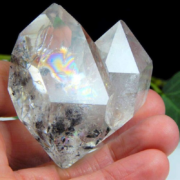

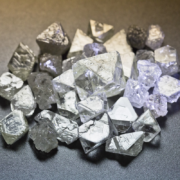
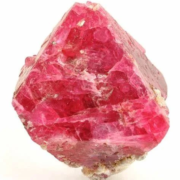
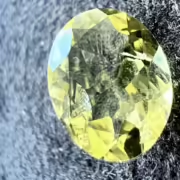
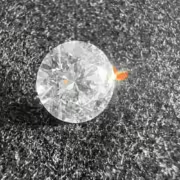


Leave a Reply
Want to join the discussion?Feel free to contribute!